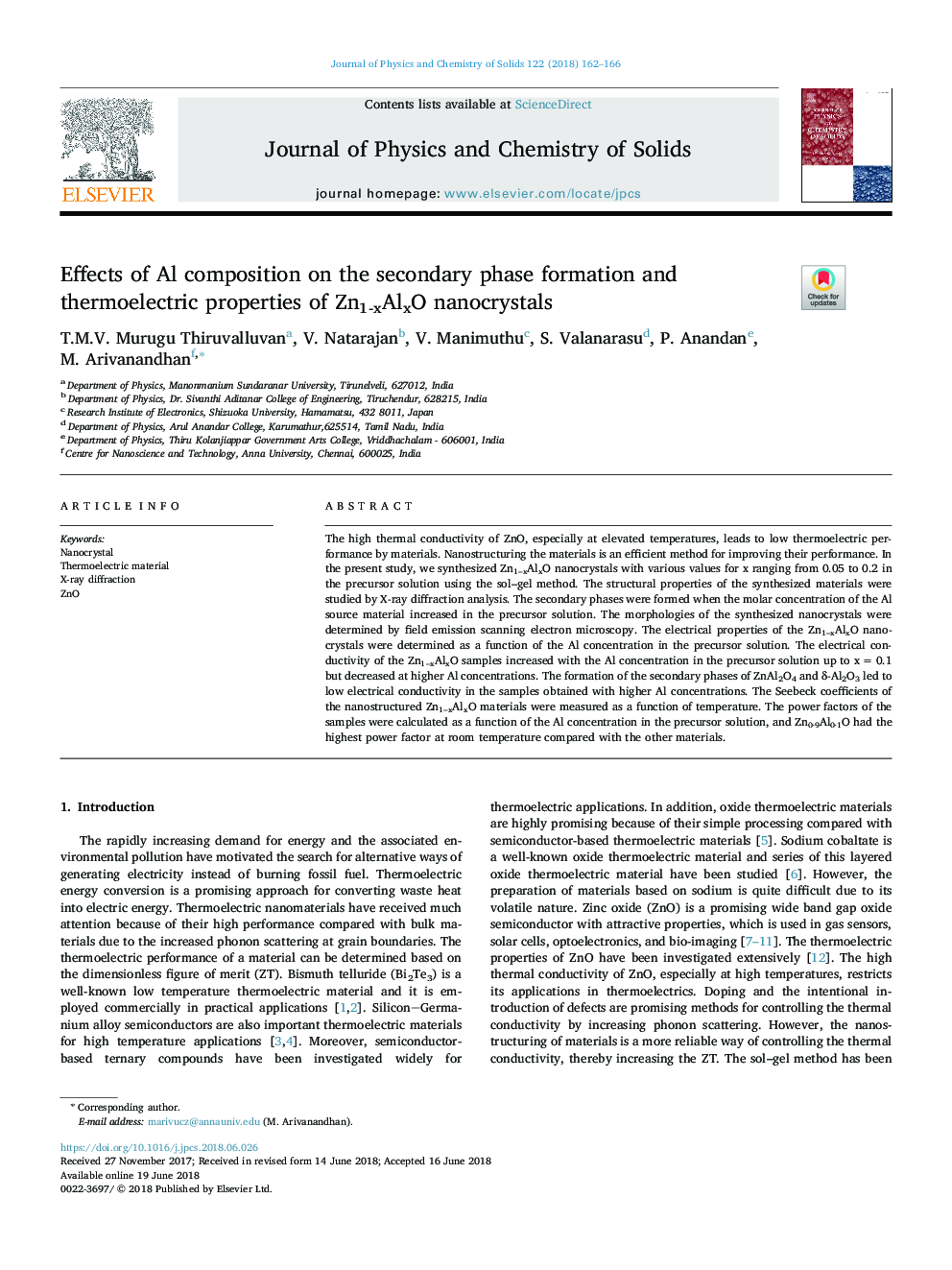| Article ID | Journal | Published Year | Pages | File Type |
|---|---|---|---|---|
| 7919858 | Journal of Physics and Chemistry of Solids | 2018 | 5 Pages |
Abstract
The high thermal conductivity of ZnO, especially at elevated temperatures, leads to low thermoelectric performance by materials. Nanostructuring the materials is an efficient method for improving their performance. In the present study, we synthesized Zn1-xAlxO nanocrystals with various values for x ranging from 0.05 to 0.2 in the precursor solution using the sol-gel method. The structural properties of the synthesized materials were studied by X-ray diffraction analysis. The secondary phases were formed when the molar concentration of the Al source material increased in the precursor solution. The morphologies of the synthesized nanocrystals were determined by field emission scanning electron microscopy. The electrical properties of the Zn1-xAlxO nanocrystals were determined as a function of the Al concentration in the precursor solution. The electrical conductivity of the Zn1-xAlxO samples increased with the Al concentration in the precursor solution up to xâ¯=â¯0.1 but decreased at higher Al concentrations. The formation of the secondary phases of ZnAl2O4 and δ-Al2O3 led to low electrical conductivity in the samples obtained with higher Al concentrations. The Seebeck coefficients of the nanostructured Zn1-xAlxO materials were measured as a function of temperature. The power factors of the samples were calculated as a function of the Al concentration in the precursor solution, and Zn0·9Al0·1O had the highest power factor at room temperature compared with the other materials.
Related Topics
Physical Sciences and Engineering
Materials Science
Electronic, Optical and Magnetic Materials
Authors
T.M.V. Murugu Thiruvalluvan, V. Natarajan, V. Manimuthu, S. Valanarasu, P. Anandan, M. Arivanandhan,
